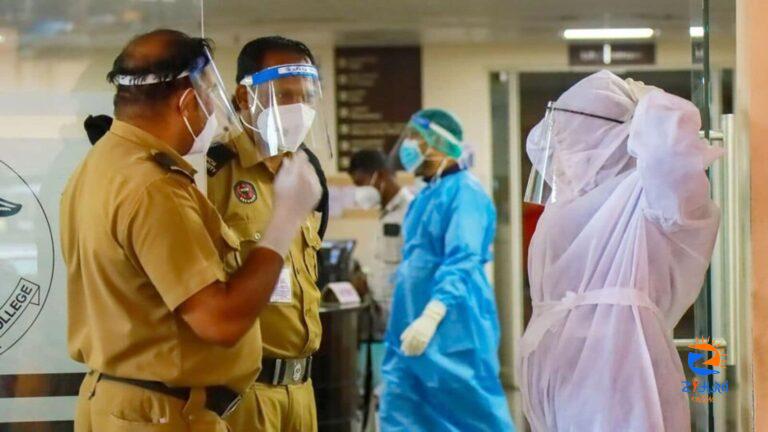
[ad_1]
Nipah Virus: Indian govt’s advisory to Kerala
As Kerala reported a Nipah Virus death, the Centre advised the following immediate public health measures to be taken by the state government:
1. Active case search in the family of the confirmed case, the neighborhood, and areas with similar topography.
2. Active contact tracing (for any contacts) during past 12 days.
3. Strict quarantine of the contacts of the case and isolation of any suspects.
4. Collection and transportation of samples for lab testing.
Besides, a joint outbreak response Central team will be deployed to assist the state with case investigation, identification of epidemiological linkages, and technical support, the Union Health Ministry said.
What is the Nipah Virus, and how did it spread?
The World Health Organization describes Nipah virus (NiV) as a zoonotic virus. This means the virus is transmitted from animals to humans and can also be transmitted through contaminated food or directly between people.
Fruit bats are the usual reservoir of the virus, and humans can become infected by accidentally consuming bat-contaminated fruits.
When the first outbreak was recognised in Malaysia and Singapore, most human infections had resulted from direct contact with sick pigs or their contaminated tissues. “Transmission is thought to have occurred via unprotected exposure to secretions from the pigs, or unprotected contact with the tissue of a sick animal,” the WHO said.
Later, the outbreaks in Bangladesh and India was most likely caused by consumption of fruits or fruit products contaminated with urine or saliva from infected fruit bats.
Human-to-human transmission of the Nipah virus has also been reported among families and caregivers of infected patients. The WHO explained, “During the later outbreaks in Bangladesh and India, Nipah virus spread directly from human-to-human through close contact with people’s secretions and excretions.”
Nipah Virus: What are the symptoms?
Those infected with the Nipah virus suffer from a range of illnesses — from asymptomatic (subclinical) infection to acute respiratory illness and fatal encephalitis. It can cause severe disease and death in people, making it a public health concern.
As per the WHO, those infected with the virus initially develop symptoms including fever, headaches, myalgia (muscle pain), vomiting and sore throat. This can be followed by dizziness, drowsiness, altered consciousness, and neurological signs that indicate acute encephalitis.
Some people can also experience atypical pneumonia and severe respiratory problems, including acute respiratory distress. Encephalitis and seizures occur in severe cases, progressing to coma within 24 to 48 hours.
How serious is the disease?
According to the WHO, the incubation period – interval from infection to the onset of symptoms – is believed to range from 4 to 14 days. However, an incubation period as long as 45 days has been reported.
Most people who survive acute encephalitis make a full recovery, but long-term neurologic conditions have been reported in survivors.
“Approximately 20 percent of patients are left with residual neurological consequences such as seizure disorder and personality changes. A small number of people who recover subsequently relapse or develop delayed onset encephalitis,” the WHO said.
Meanwhile, the case fatality rate is estimated at 40 percent to 75 percent. The WHO says the rate can vary by outbreak depending on local capabilities for epidemiological surveillance and clinical management.
The virus can also cause severe disease in animals such as pigs, resulting in significant economic losses for farmers.
Nipah Virus: Diagnosis and challenges
The main tests used to diagnose Nipah virus infection are real time polymerase chain reaction (RT-PCR) from bodily fluids and antibody detection via enzyme-linked immunosorbent assay (ELISA).
Other tests used include polymerase chain reaction (PCR) assay, and virus isolation by cell culture.
The quality, quantity, type, timing of clinical sample collection and the time needed to transfer samples to the laboratory can affect the accuracy of laboratory results.
Nipah Virus treatment
There are currently no drugs or vaccines specific for Nipah virus infection, even though the WHO has identified Nipah as a priority disease for the WHO Research and Development Blueprint. Treatment is mostly limited to supportive care and syndromic management of acute encephalitis syndrome.
So, in the absence of a vaccine, the only way to reduce or prevent infection is by raising awareness of the risk factors among people. People must be educated about the measures they can take to reduce exposure to the Nipah virus.
Nipah Virus: How to reduce the risk of infection in people
As per the WHO, public health educational messages should focus on:
1: Decreasing bat access to date palm sap and other fresh food products.
2. Gloves and other protective clothing should be worn while handling sick animals or their tissues, and during slaughtering and culling procedures.
3. One must avoid close unprotected physical contact with Nipah virus-infected people. They must wash their hands regularly after caring for or visiting sick people.
4. Healthcare workers caring for patients with suspected or confirmed infection, or handling specimens from them, should implement standard infection control precautions at all times
3.6 Crore Indians visited in a single day choosing us as India’s undisputed platform for General Election Results. Explore the latest updates here!
Download The Mint News App to get Daily Market Updates.
Published: 21 Jul 2024, 04:47 PM IST
[ad_2]